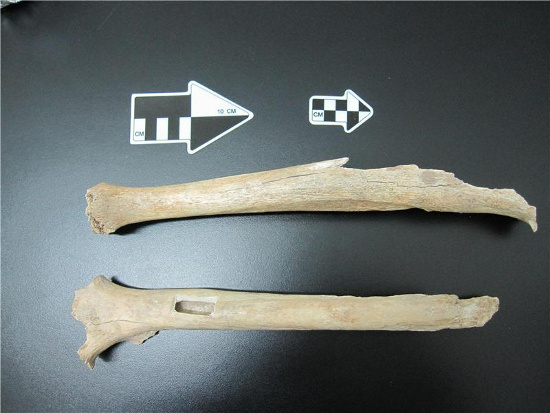Detecting modern human individual fossils 40,000 years old
(scienceinfo.net) - A relative from Tianyuan cave: a human being who lived 40,000 years ago seems to be a relative of many Asians and native Americans today.
Ancient DNA has revealed that humans who lived about 40,000 years ago in the area near Beijing, seem to be related to Asians and Native Americans today .
An international team of researchers, including Svante Paabo and Qiaomei Fu scientists of Max Planck Institute for Evolutionary Anthropology in Leipzig, Germany, extracted the chain and mitochondrial DNA from the foot of a Modern personfrom ancient Tianyuan cave near Beijing, China.This DNA analysis of the individualshows that the Tianyuan have the same origins as the Asian and Native American ancestors.In addition, the researchers found that the ratio of DNA of Neanderthal and Denisovan inthis ancient person was not higher than thoseliving in this areatoday.

Humans are similar in shape to humans today with fossils located throughout Eurasiabetween 40,000 and 50,000 years ago.Genetic relationships between modern people appear early and populations today are still notestablished.Qiaomei Fu, Matthias Meyer and colleagues at the Max Planck Institute for Evolutionary Anthropology in Leipzig, Germany, used a new technique to identify ancient genetic materialfrom a fossil evenin large quantities. DNA from bacteria in the soil.
The researchers then rebuilt a genetic profile of the above fossilized ancient person .Svante Paabo of Max Planck Institute for Evolutionary Anthropology said:" This individual lives in an important period of evolutionary transition when the ancient people shared some features with forms. previously as Neanderthals, replaced Neanderthals and Denisovans, but this person was later extinct . " Max Planck leads the research said above .
Genetic records show that this early modern individual was a relative of many Asians and Native Americans today, but genetically separated from today 's European ancestors . In addition, Tianyuan individuals do not contain much more Neanderthal or Denisovan DNA than those currently living in this area . 'More analysis of these early modern people across Eurasia will help us know more precisely when and how modern people spread across Europe and Asia , ' he said. Svante Paabo said.
Much of the work was done in a new laboratory run by the Max Planck Society research institute and the Chinese Academy of Sciences in Beijing.
- Detecting common ancestor fossils of humans and modern primates
- Fossils of 300,000 years old reveal the unexpected origins of humanity
- Discovered mysterious skull bones 400,000 years old in Portugal
- Detecting plant fossils 240 million years
- Video: Discover the oldest modern fossil outside Africa
- Detecting fossils of 2 new horned dinosaurs
- Detecting ugly reptile fossils, head full of humps
- Detecting fossil mammoths along the river
- Modern people have a new ancestor
- The discovery of new ancient human fossils from more than 3 million years ago
- Detecting fossils of human bones living on trees
- Fossils show that modern people come to Asia earlier than Europe
 Discovered an ancient centipede fossil 99 million years old
Discovered an ancient centipede fossil 99 million years old Discovered bat-like dinosaurs in China
Discovered bat-like dinosaurs in China Discovered a 200-year-old bronze cannon of the coast
Discovered a 200-year-old bronze cannon of the coast Discover 305 million-year-old spider fossils
Discover 305 million-year-old spider fossils